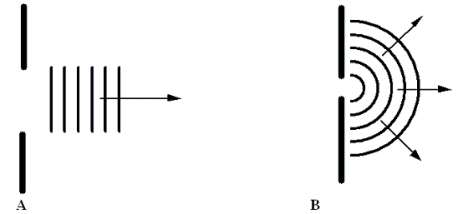Multiple Choice
Water waves approach an aperture.The resulting patterns are shown for two different cases, A and B, in which the wavelength and aperture size are varied.  Which one of the following statements concerning these cases is true?
Which one of the following statements concerning these cases is true?
A) Neither figure shows diffraction.In both cases, the wavelength is much smaller than the aperture.
B) Diffraction occurs in A, but not in B because the wavelength in A is much smaller than the aperture.
C) Diffraction occurs in B, but not in A because the wavelength in B is much smaller than the aperture.
D) Both figures show diffraction.In both cases, the wavelengths are approximately the same size as the aperture.
E) Diffraction occurs in B, but not in A because the wavelength in B is approximately the same size as the aperture.
Correct Answer:

Verified
Correct Answer:
Verified
Q6: A string with a length of 3.0
Q10: A rope of length <img src="https://d2lvgg3v3hfg70.cloudfront.net/TB6393/.jpg" alt="A
Q15: A string with a length of 3.0
Q18: Two loudspeakers are located 3.0 m apart
Q31: A cylindrical tube sustains a fundamental frequency
Q36: A pebble is dropped in a lake;and
Q38: One string on a guitar is exactly
Q41: A string with a length of 3.0
Q47: Vibrations with frequency 6.00 × 10² Hz
Q49: Two loudspeakers are located 3.0 m apart